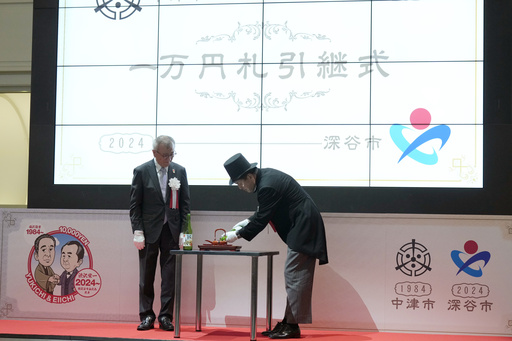Japan has unveiled new banknotes for the first time in 20 years, incorporating advanced 3D hologram technology to combat counterfeiting. Prime Minister Fumio Kishida lauded the innovative anti-counterfeit features of the new 1,000 yen, 5,000 yen, and 10,000 yen bills as a milestone. The redesigned bills showcase individuals who symbolize Japanese capitalism, women’s empowerment, and scientific advancements.
The 10,000 yen bill portrays Eiichi Shibusawa, known as “the father of Japanese capitalism,” recognized for founding numerous companies pivotal to Japan’s economic growth. Umeko Tsuda, a prominent feminist and educator, graces the 5,000 yen note, while the 1,000 yen bill features Shibasaburo Kitasato, a significant figure in tetanus and bubonic plague research.
Each bill’s reverse side showcases iconic Japanese imagery, such as Tokyo Station, wisteria flowers, and Mount Fuji by artist Katsushika Hokusai. The new banknotes also feature larger text for improved readability, particularly for the elderly population. Around 7.5 billion new notes are expected to be printed by the end of March next year, with a daily circulation estimated at 1.6 trillion yen ($10 billion).
Despite the introduction of the new bills, existing currency will remain valid, as older notes are required for transactions in vending machines and bus fares. The distribution process will prioritize financial institutions before reaching ATM and retail outlets. Cash transactions continue to dominate in Japan, with the country’s adoption of cashless payments progressing slower than in other nations.
Bank of Japan Governor Kazuo Ueda emphasized the importance of cash for secure and convenient payment settlements, highlighting its enduring relevance despite global trends towards cashless transactions.


